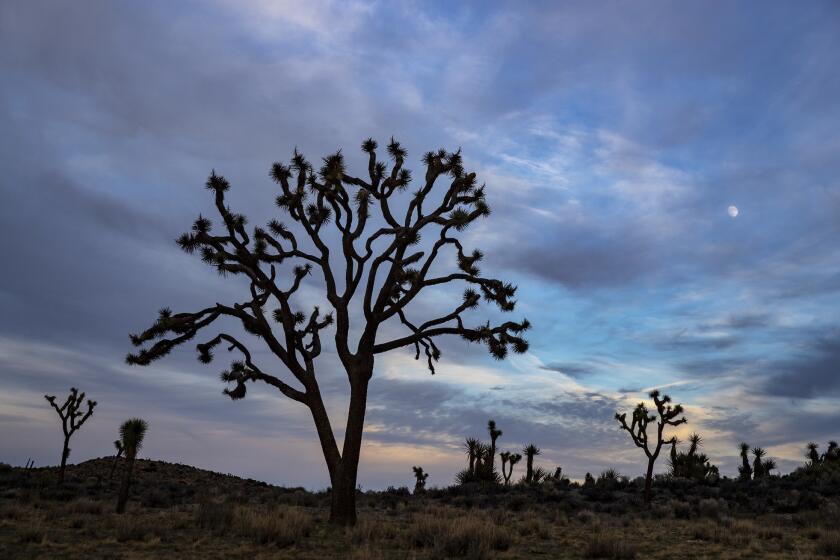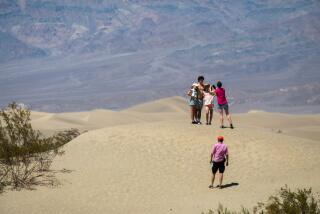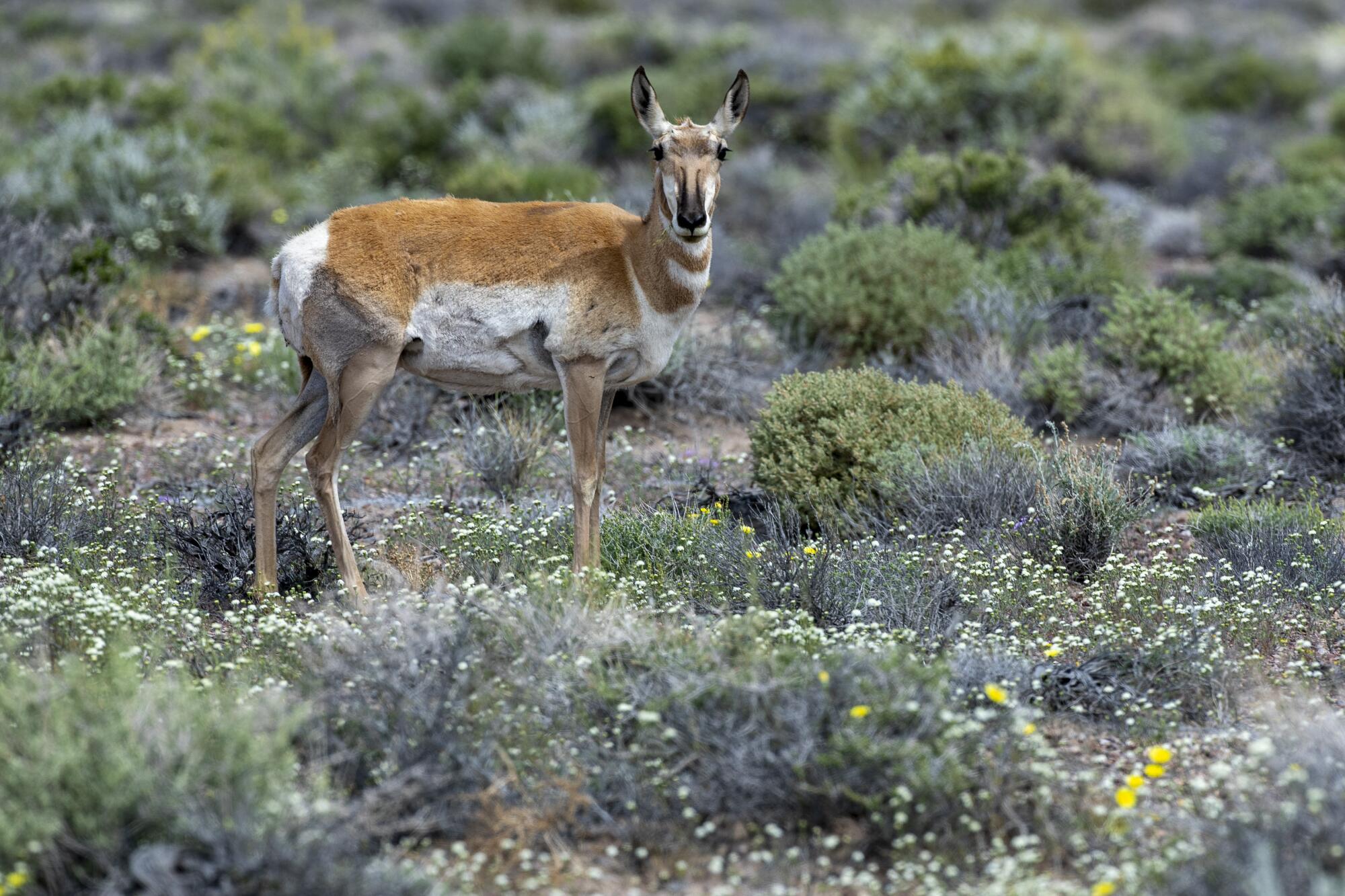
DEATH VALLEY NATIONAL PARK — More than a century after railroads, ranchers and hunters vanquished their ancestors, pronghorn antelope are returning to this unforgiving expanse of desert along the California-Nevada border.
A photo of a lone male and a harem of five does shared on Death Valley’s Facebook page in late April was only the latest indication that the American pronghorn, North America’s land speed champion, may be extending its migratory range into the Mojave Desert once again from cooler seas of sage nearly 100 miles to the north and east.
“It’s not all gloom and doom, woohoo!” the nonprofit National Parks Conservation Assn. announced to wildlife advocates nationwide. “If nothing else, enjoy the feel-good photo and I hope you’re doing well.”
The pronghorn’s reappearance here is a bit of a mystery, as most animal species are making tracks for higher and cooler elevations as the climate warms. Some say the interloping antelope could find themselves in dire straits once summer heat blankets the park.
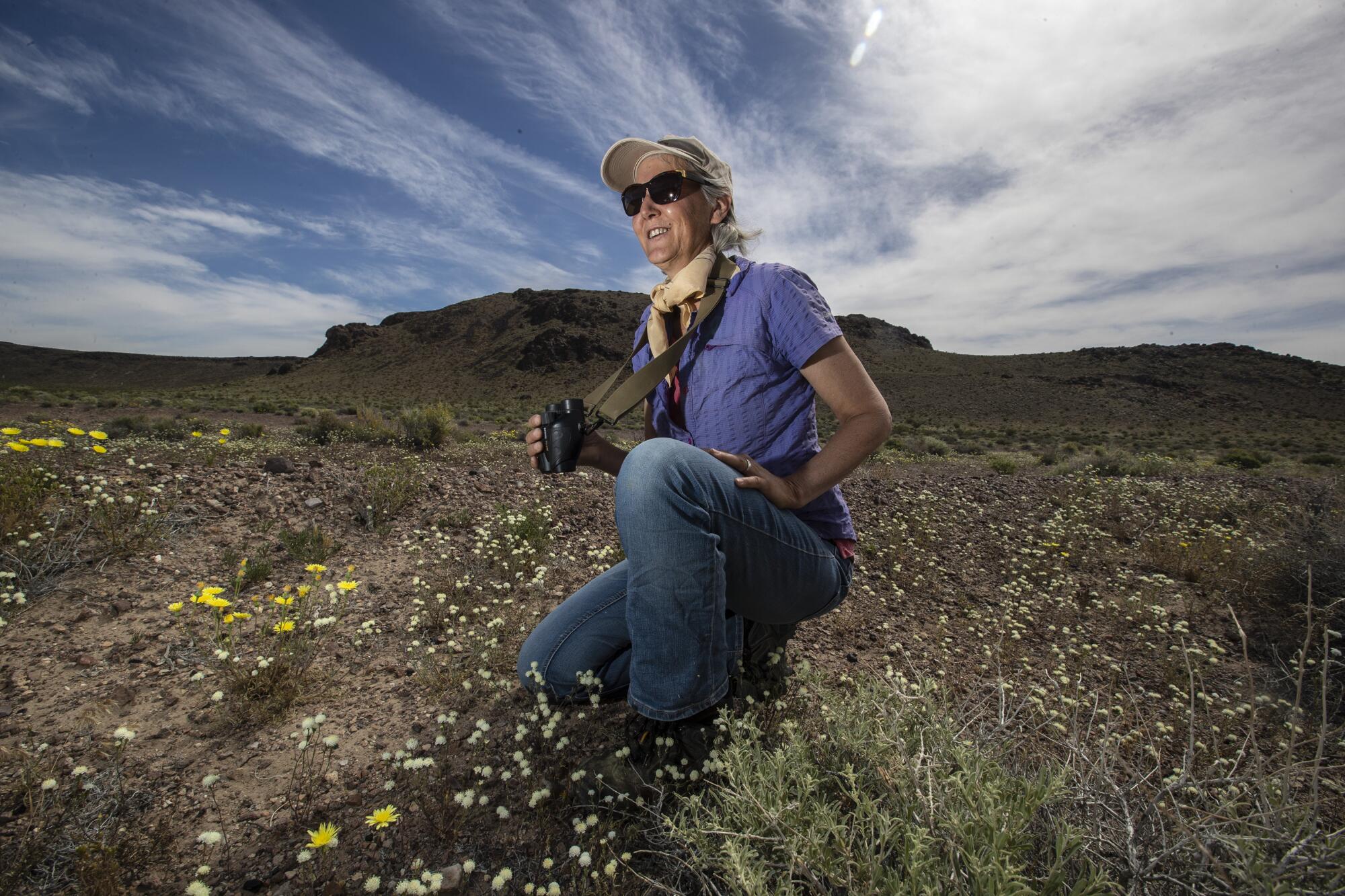
Along with the recent photo, park officials noted: “Pronghorn may be some of the newest residents to our park! While on patrol, rangers have recently spotted a herd of these quick-footed animals and at least one lone male exploring the park, likely the result of a migration that has been years in the making.
“While pronghorn have been witnessed in the park on occasion for the past two years,” they added, “this increase in their presence suggests these graceful creatures may become long-term residents of the valley.”
Recently, a group of biologists spent the morning photographing a doe that was guarding a newly born fawn in a patch of desert scrub just east of the park’s northern boundary near the town of Beatty, Nev.
The California Fish and Game Commission will decide in June whether to declare the tree a candidate for listing.
Additional analysis is needed to determine whether the deer-like animals with forward jutting black horns are establishing residency in the usually desolate 3.3-million-acre park. In the meantime, their spring season ventures into the Mojave in recent years open the door to some obvious questions.
Exactly where are they coming from? Are they rediscovering ancient migratory routes in arid lands punctuated by scattered mountains and plateaus or creating new pathways into areas where drought and rising temperatures are upsetting the delicate balance between life and death for such species as desert tortoises and Joshua trees?
One biologist who has been tracking recent pronghorn wanderings from the Ubehebe Craters volcanic field in the northern half of Death Valley to the tiny desert berg of Shoshone near the park’s southern end has proposed an answer.
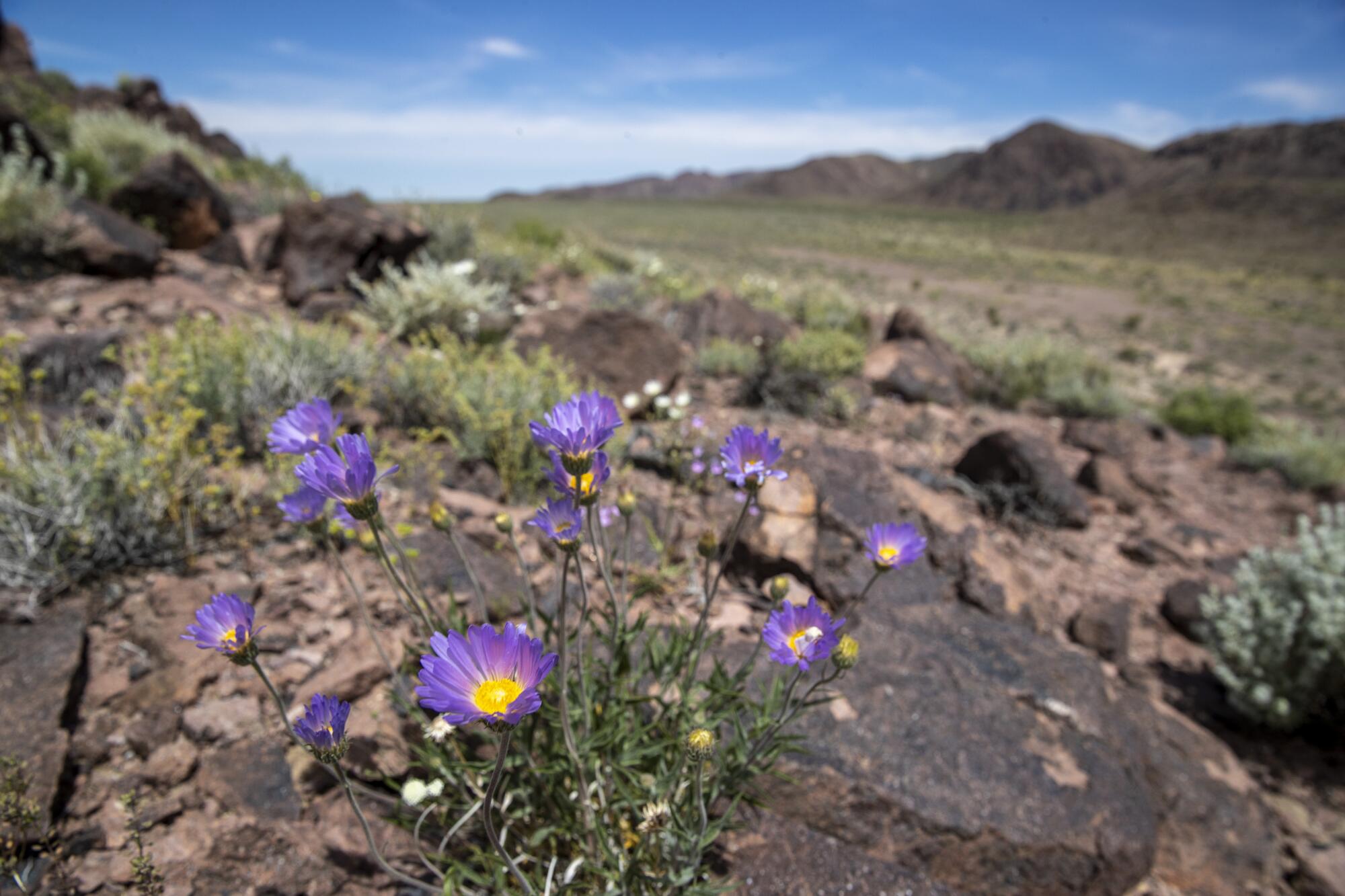
“Pronghorn are following lush buffets of rain-fed wildflowers,” said Laura Cunningham, California director of the nonprofit Western Watersheds Project and a resident of Beatty, about five miles east of the park.
“We’ve been getting some nice blooms triggered by erratic storms in the higher elevations of the northern Mojave Desert over the past five years or so,” she said. “By piecing storm events, wildflower blooms and reported pronghorn sightings together, it’s hard not to think that there may well be new migratory patterns unfolding before our eyes.”
“In other words,” she added, “pronghorn are taking a giant step out of the sage and into the desert to dine on the flowers of spring in the northern Mojave: [Desert] dandelions, desert pincushions, primrose and desert golds.”
Kathleen Longshore, a research biologist with the U.S. Geological Survey, would not go that far. But she pointed out that seasonal rainfall patterns vary significantly over the national park and can have huge ecological consequences.
It is not all that unusual for northern sections of the park to get hammered by late-winter storms that alter the rugged landscape with layers of mud and rocks and refresh the entire landscape with carpets of grass and wildflowers.
“We can test Laura’s theory,” Longshore suggested, by documenting the movements of members of a pronghorn population in the Nevada National Security Site, about 50 miles northeast of Death Valley’s boundary line, that were recently fitted with tracking collars.
“They’re not going to hang around in the desert much longer. The Mojave is a tough place for pronghorn in summer.”
— Kathleen Longshore, a research biologist with the U.S. Geological Survey
“It shouldn’t be difficult to determine whether some of the pronghorn showing up farther south than they should be may have wandered out of that Nevada security site herd to browse land that greened up after seasonal storms,” she said.
In any case, she added, “They’re not going to hang around in the desert much longer. The Mojave is a tough place for pronghorn in summer.”
Pat Cummings, a game biologist with the Nevada Department of Wildlife, agrees. “If those animals don’t have a source of standing water, they’re going to be in a pickle,” he said. “In Death Valley, the party is over in June.”
The highest temperature ever recorded on the planet was in Death Valley on July 10, 1913 — 134 degrees.
The park’s headquarters in Furnace Creek is 190 feet below sea level. Nearby Badwater, at 282 feet below sea level, is the lowest spot in the Western Hemisphere. On summer days, some visitors crack eggs there just to watch them fry in the heat, inadvertently creating problems for park staffers by attracting coyotes.

Scientists say pronghorn evolved in cooler climates when the Western Hemisphere was home to the American cheetah and, in order to survive, they developed superb survival equipment — speed and vision. When threatened, pronghorn, which have been clocked in bursts of 60 mph, do not run for cover, but for wide open spaces.
Prior to the westward expansion an estimated 40 million pronghorn inhabited the grassland, deserts and sagebrush flats of western North America from Canada’s prairies to northern Mexico. By the early 20th century, their numbers had been reduced to fewer than 20,000.
Jim Mattern, known as Death Valley Jim, was once called the desert’s “last best hope.” That was before he was convicted of conducting unauthorized national parks tours, and banished from Death Valley and Joshua Tree.
Bucks weigh up to 150 pounds, does around 90. From ground to shoulder they stand about 36 inches high. Pronghorn have large eyes that protrude from the skull, giving them a field of view of more than 300 degrees.
Before the mid-19th century, pronghorn roamed the hills and flatlands of the San Fernando, San Gabriel, Antelope, Perris and Moreno valleys and the Baldwin Hills. In his book “Here Roamed the Antelope,” Glenn A. Settle quoted Antelope Valley pioneer John D. Covington (1867-1949):
“When I was a boy, 30 cowboys and myself made a count one day and counted, as nearly as we could, 7,000 antelope.”
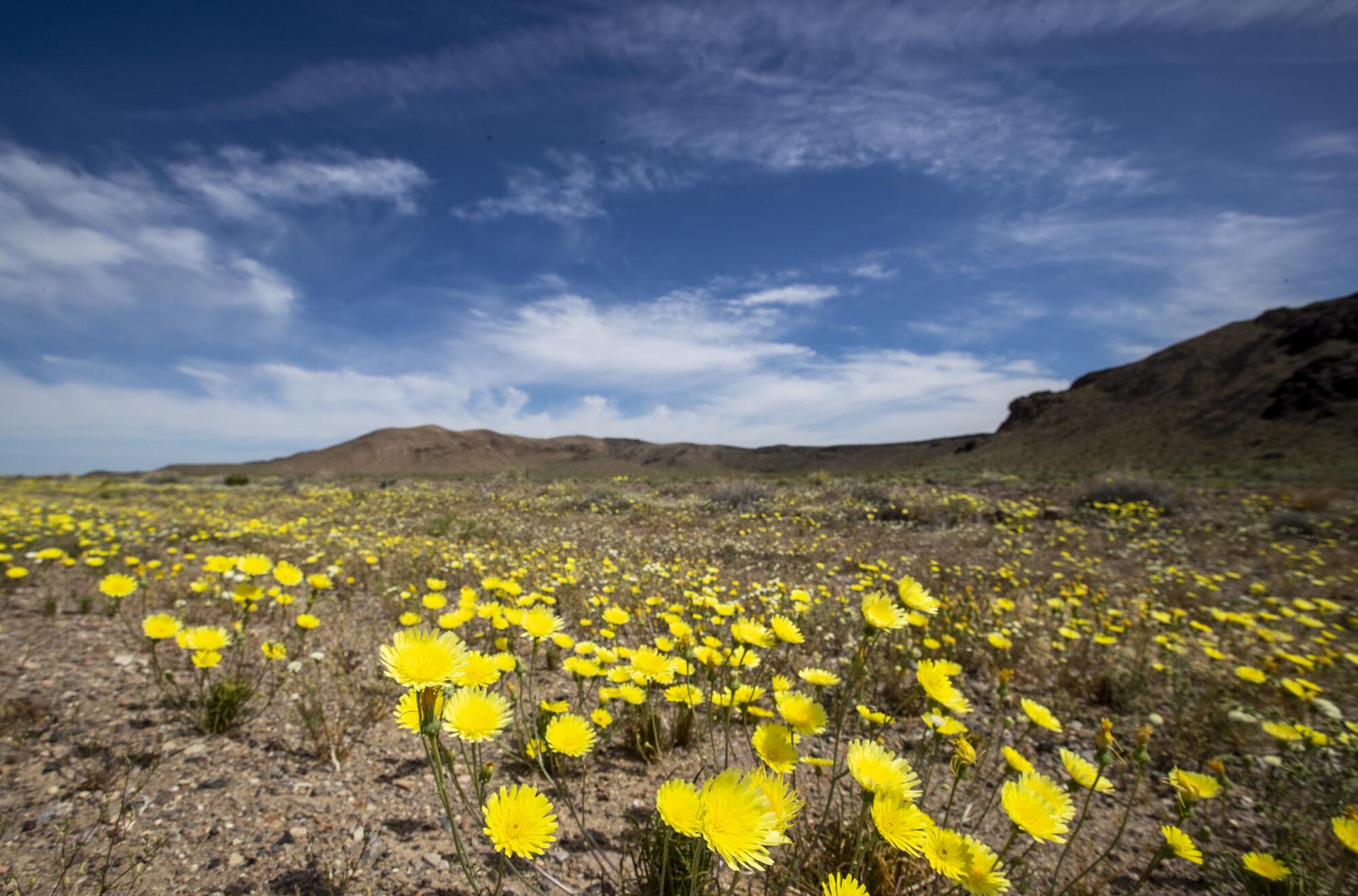
In a 1906 book, “California’s Mammals,” Frank Stephens wrote: “In 1877 I saw two dozen antelope near Perris. In 1878 I saw one near Riverside. Today [1906], there are very few in southeastern California.”
Now, pronghorn have joined a small but growing list of animals reclaiming ancient haunts without the help of costly, and often controversial, state and federal reintroduction projects. Among them are wolves in Northern California forests and Pacific fishers, red foxes and wolverines clinging to survival in the cold, steep slopes of the Sierra Nevada range.
Peering through binoculars at the doe nibbling wildflowers near where her kid was hiding, motionless, in grass and desert shrub from predators, Cunningham mused to no one in particular, “Wouldn’t it be great to see baby pronghorn taking their first steps in Death Valley?”
